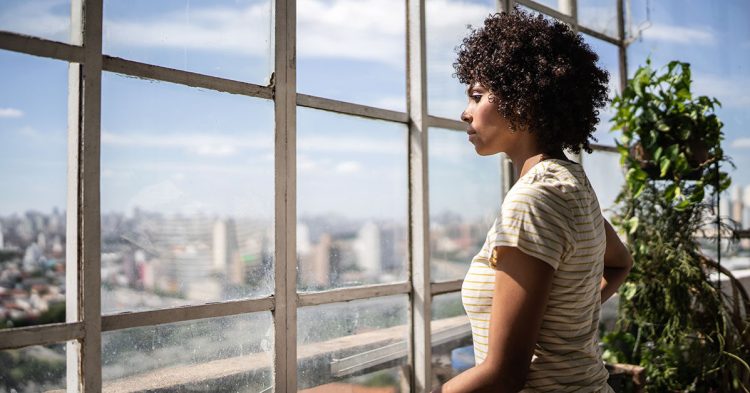PTSD and social anxiety are sometimes connected, but with the right support, you can manage the symptoms of both.
If you’ve experienced trauma that’s led to post-traumatic stress disorder (PTSD), you may already have anxiety. If you also live with social anxiety disorder, this may increase the number of situations that cause you stress.
Anxiety and the aftereffects of trauma are often connected but there are treatments and tips to manage both.
There are a few ways that social anxiety disorder and post-traumatic stress disorder (PTSD) are connected.
People with PTSD might:
- feel different because of PTSD, so they avoid social situations
- experience socially isolating shame or guilt stemming from PTSD
- live with depression from PTSD, which makes it difficult to maintain a social life
People with social anxiety may have a higher chance of experiencing PTSD because of social trauma, which according to research from 2020, can involve fear of humiliation and rejection in social situations.
Anyone can experience PTSD. It can occur if your nervous system doesn’t fully reset after trauma.
The effects of PTSD fall into four categories:
- Intrusion. Flashbacks, memories, and dreams are examples of these involuntary experiences.
- Avoidance. You may not want to think or talk about the trauma you’ve experienced and may avoid places, people, and other reminders.
- Mood and cognition changes. Distorted thoughts are an example, including wrongly blaming yourself for the trauma.
- Reactivity changes. You might feel irritable or behave recklessly.
The types of traumas that can cause PTSD includes:
- a serious accident
- the threat of death
- significant injury
- sexual violence
- a natural disaster
- war, combat, or terrorism
PTSD can also result from repeated exposure to the trauma of others, as experienced by a police officer or first responder.
According to the American Psychiatric Association (APA), PTSD affects around 3.5% of adults in the United States each year.
Social anxiety disorder affects an estimated 12.1% of adults in the United States, according to the National Institute of Mental Health.
People with social anxiety disorder experience stress in social situations, including a fear of being judged or humiliated.
Social anxiety can cause physical symptoms such as a racing heart and interfere with your ability to speak or interact with others. Some people with social anxiety disorder may have trouble going to work or school.
According to research from 2019, an estimated 3.2% to 16% of people living with social anxiety disorder also experience PTSD. If a person’s primary diagnosis is PTSD, the co-occurrence of social anxiety disorder increases to about 43%.
A 2020 study found that social anxiety disorder, formerly known as social phobia, was second only to depressive disorders as the most common co-occurring diagnosis with PTSD.
People living with PTSD can feel a high amount of social stress, and certain social situations might trigger PTSD. You might find yourself in a continuous state of hypervigilance because your sympathetic (fight, flight, or freeze response) nervous system expects more threatening situations.
This can make social situations anxiety provoking.
If you have a primary diagnosis of social anxiety disorder, you may experience social trauma differently than other people. You may develop PTSD because of social trauma.
Ordinarily, the criteria for a PTSD diagnosis include having experienced a trauma that poses the threat of death, injury, or sexual violence. But people with social anxiety disorder may have a lower threshold for trauma when it’s social in nature.
For people with pre-existing social anxiety, this type of experience can be particularly upsetting.
A 2020 study involving people living with social anxiety disorder, obsessive-compulsive disorder (OCD), and a control group with no psychiatric diagnoses found that one-third of those with social anxiety disorder met the criteria for PTSD because of social trauma.
None of the people with OCD or the control group experienced clinically significant PTSD traits from their social trauma.
If you have more than one issue, it can be hard to know where to start. But there are options to help manage both.
Therapy is effective for both PTSD and social anxiety. Therapy options to consider include:
CBT can also help you manage social anxiety disorder, in addition to:
If your symptoms are still interfering with your ability to function daily, even with therapy, you can also try medication.
There are several medications that can help treat anxiety:
Doctors sometimes prescribe SSRIs to help manage PTSD symptoms. Sertraline (Zoloft) is an SSRI that’s used for both anxiety and PTSD.
There are other strategies you can try to help manage your symptoms.
In the moment
Both PTSD and social anxiety can undermine your feeling of being in control. It can help to have ways of quickly regaining your sense of security.
- Name your feeling. If you’re caught off guard by an anxiety or PTSD response such as dizziness or an upset stomach, naming it as a trigger reaction can help the unpleasant feeling pass more easily.
- Breathe. Focusing on slowing and deepening your breathing is an effective anxiety-management tool.
- Connect to your surroundings. Turning your attention to sensory input can be calming. Try naming and counting a few things you can hear, see, smell, feel, and taste.
- Distract yourself. Using humor, calming music, or a simple activity can take your mind off your anxious feelings.
It also helps to know your triggers, so you can manage how often you encounter them.
Lifestyle
Another way to manage PTSD and social anxiety is to assess and adjust your lifestyle. It’s OK to focus on one area at a time as you build new habits such as:
- regular exercise
- improved nutrition
- restorative sleep
- enjoyable leisure activities
- positive social contact
Mindfulness
If you haven’t yet tried it, consider exploring a mindfulness practice. There’s evidence pointing to its effectiveness for both PTSD and anxiety.
A 2022 review found that mindfulness reduced PTSD symptoms. For social anxiety disorder, a 2021 review found that mindfulness-based interventions helped to reduce symptoms, and the effects lasted for 12 months.
Both PTSD and social anxiety can make it difficult to interact with other people in certain situations. You may have a harder time at work or school, or even during shorter public encounters such as a trip to the grocery store.
But there are treatment options that can help manage your symptoms.
Keep in mind that if a therapy or medication isn’t working for you, there are other options. Communicating regularly with a healthcare or mental health professional can help, particularly if you want to change your treatment direction.
If you’re unsure where to start, you can check out Psych Central’s hub on finding mental health support.
Source by psychcentral.com


